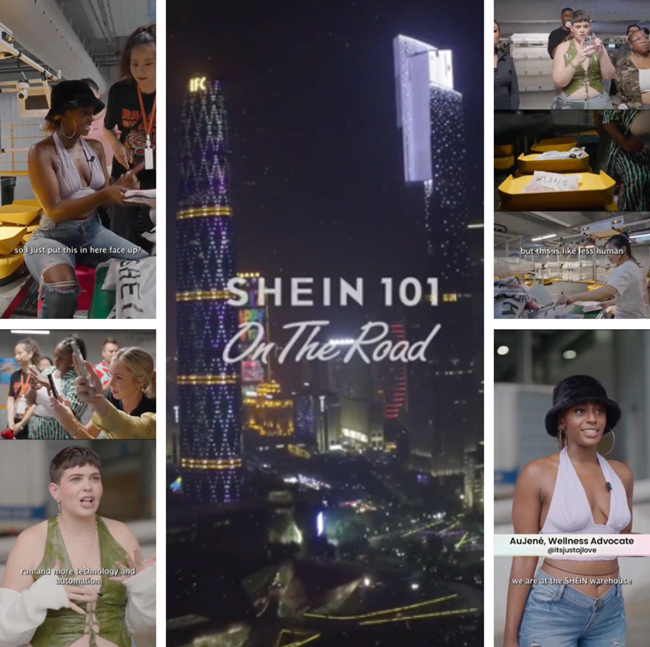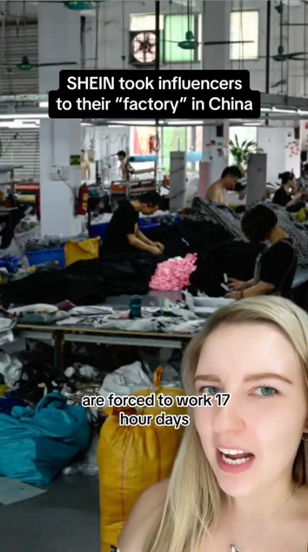Often when researching the circulation of activist rhetoric, we look at the texts that circulate with the most intensity and engagement, centering activist rhetoric and campaigns that garnered national or international attention, such as Black Lives Matter and Me Too (see Larson; Tetreault). This focus on activist rhetoric that has achieved a certain level of momentum or attention makes sense; we can learn a lot from these texts and offer insight for other activists.
However, most activist rhetoric never reaches national attention; instead, it circulates on much smaller scales, from individuals writing outside of an organized campaign to more local campaigns targeted at a specific community to campaigns with larger ambitions that cannot quite garner the same amount of attention or reach as national movements. Paying attention to activist rhetoric circulating at lower levels of visibility may show us how different actors within the ecologies that activists write in may be intervening in activist rhetorics’ circulation, potentially preventing what may have become the next national or international movement for change. Additionally, actors and texts circulating at a lower intensity relative to others still collectively shape activist ecologies and impact the other people, ideas, and events within them. Therefore, it is important to consider what is circulating within activist ecologies at different scales of intensity. Intensity is generated by rhetorical velocity, or the “rapidity at which information is crafted, delivered, distributed, recomposed, redelivered, redistributed, etc.” (Ridolfo and DeVoss), but intensity also builds as affects accumulate and stick to things as they circulate.
A Method to Collect Texts Circulating at Different Intensities
In my current research, I examine activist rhetorics circulating in the ecology surrounding SHEIN’s 2023 influencer tour, where SHEIN invited fashion influencers to tour one of their manufacturing facilities in an attempt to rebrand the fast fashion company as ethical and sustainable in the wake of a multitude of scandals surrounding their unethical labor practices, large environmental impact, and use of hazardous materials in their clothing (Cowley, et al.; “Fast Fashion;” Inside the Machine; Kollbrunner; Rajvanshi, et al.; Romo; “Synthetics”). The majority of the data I collected included over 400 TikToks. I could not collect all the videos connected to the tour, since there were thousands; however, through my research I wanted to see not only what (and who) was circulating most intensely but also what (and who) was not and why that might be.

To capture what was circulating at different intensities, I first identified keywords and hashtags associated with the tour, making sure to include ones used by different types of actors. SHEIN, for example, tended to use different hashtags than activists and journalists. Then, I collected the twenty most viewed videos for each hashtag and keyword search as well as the video posted chronologically after each of these videos, regardless of who posted it or how much attention it garnered. As the videos were hosted on TikTok, and I began data collection in 2023, I used the TikTok & Instagram Sorter Chrome extension to sort the videos. Although TikTok has now limited sorting features to their desktop site, this tool is still useful to display the number of views for each video without checking users’ profile pages or to sort the videos by other metrics than what TikTok allows for (“TikTok”). While I was collecting TikTok videos, this viral/chronological method for data collection could be applied to content on any social media platform, though different sorting software may be required depending on the platform.
The Benefits and Drawbacks of a Viral/Chronological Approach
Benefits
- Collects videos circulating at a variety of intensities, including most widely circulated
- Offers insight into what was circulating simultaneously to the most viral posts
- Shows more of the ecology beyond the most visible posts and actors
- Can reveal the influence of unexpected actors
Drawbacks
- It is not comprehensive
- Videos’ intensities can vary widely
- Chronologically collected videos may be less relevant based on platform filtering
As it is intended for when there is too much content for all of it to be collected and analyzed, this method is not comprehensive; however, collecting both the most viewed videos and the videos posted chronologically after each one allowed me to collect a sample of videos that circulated at a variety of intensities and analyze examples of what was circulating around the same time as the most viewed videos, but not receiving the same amount of attention. The intensity at which the chronologically collected videos circulate may vary wildly, so in certain cases, it might not give enough variety in intensity, especially when collecting a smaller sample of texts. While this approach does give a sense of the ecology beyond what is circulating most widely, it still attends significantly to the texts with the widest reach and potential influence, as they make up at least half of the sample. This provides a balance between attending to what is viral within the ecology and understanding what makes up the ecology more broadly, as the vast majority of people and texts that make up the ecology are not reaching that level of visibility; yet, the virality of those few people and posts that do reach that level of visibility can have a large impact on the ecology as a whole.
Additionally, this method reveals what actors would have been missing from the ecology had only the most viral texts been included. For example, in my research, many of the activists in my sample were included because they were chronologically after a more viral video rather than because their videos were viral. This also can reveal the influence of unexpected actors. While coding, I found a type of actor that I had not expected in the ecology: information brokers. An information broker is a person or group/organization whose social media account is used to spread gossip about other people, organizations, and events. These accounts often frame what they are doing as spilling tea, pop culture commentary, or celebrity gossip.

Information brokers exchange gossip for attention, using intrigue and scandal to circulate their content, and this approach often circulates their content to larger audiences than the activists in my sample, competing with the large number of views SHEIN themselves achieved on many of their videos while, at times, reiterating activist talking points (see fig. 2).
In conclusion, attending to what and who is circulating at a variety of intensities, not just those circulating most intensely, is essential to understanding more fully the nature of activist rhetorics’ circulation, and this viral/chronological approach is just one way to structure research to reach this understanding.
Works Cited
Cowley, Jenny, et al. “Experts Warn of High Levels of Chemicals in Clothes by Some Fast-Fashion Retailers: Shein, AliExpress, Zaful Stop Sales of Questionable Products to Canadians Following Marketplace Investigation.” Canadian Broadcasting Corporation, 1 Oct. 2021, www.cbc.ca/news/business/marketplace-fast-fashion-chemicals-1.6193385.
“Fast Fashion and the Uyghur Genocide: Interim Findings.” The Select Committee on the Chinese Communist Party, 22 June 2023, selectcommitteeontheccp.house.gov/sites/evo-subsites/selectcommitteeontheccp.house.gov/files/evo-media-document/fast-fashion-and-the-uyghur-genocide-interim-findings.pdf.
Inside the Shein Machine: UNTOLD. Channel 4, 17 Oct. 2022, www.channel4.com/programmes/inside-the-shein-machine-untold/on-demand/73730-00.
Kollbrunner, Timo. “Toiling Away for Shein: Looking Behind the Shiny Fasçade of the Chinese ‘Ultra-Fast Fashion’ Giant.” Public Eye, Nov. 2021, stories.publiceye.ch/en/shein/.
Larson, Stephanie R. “‘Just Let This Sink In:’ Feminist Megethos and the Role of Lists in #MeToo.” Rhetoric Review, vol. 38, no. 4, 11 Oct. 2019, pp. 432-444. Routledge, DOI: 10.1080/07350198.2019.1655304.
Melissa [@sipteawithmelissa]. “Honestly couldn’t not comment on this today 😒😒😒 #popculturecommentary #popculturenews #celebnewstiktok #celebnews #insidethesheinmachine #fastfashionsucks #fastfashionisntcute.” TikTok, 23 June 2023, www.tiktok.com/@sipteawithmelissa/video/7247943030982970650.
Rajvanshi, Astha, et al. “Shein Is the World’s Most Popular Fashion Brand—at a Huge Cost to Us All.” Time, 17 Jan. 2023, time.com/6247732/shein-climate-change-labor-fashion/.
Ridolfo, Jim and Dánielle Nicole DeVoss. “.” Kairos, vol. 13, no. 2, 15 Jan. 2009, kairos.technorhetoric.net/13.2/topoi/ridolfo_devoss/velocity.html.
Romo, Vanessa. “Shein Invited Influencers on an All-Expenses-Paid Trip. Here’s Why People are Livid.” NPR, 30 June 2023, www.npr.org/2023/06/30/1184974003/shein-influencers-china-factory-trip-backlash.
SHEIN US [@shein_us]. “Get a glimpse of the process of how your purchases are packaged directly from our facility and delivered to your doorstep. Watch as our partners discover the cutting-edge tech that streamlines our operations and receive a hands-on experience in packaging. Stay tuned to the #SHEIN101 series to learn more of what goes on behind the scenes at #SHEIN #SHEINOnTheRoad.” TikTok, 20 June 2023, www.tiktok.com/@shein_us/video/7246897502841064711.
“Synthetics Anonymous 2.0: Fast Fashion’s Persistent Plastic Problem.” Changing Markets Foundation, Dec. 2022, changingmarkets.org/wp-content/uploads/2022/12/Synthetics-Anonymous-2.0-Report-final-web.pdf.
Tetreault, Elliot. “‘Who Are Your People?’: Black Lives Matter Activists’ Use of Relational Knowledge to Counter Disinformation Campaigns.” enculturation: A Journal of Rhetoric, Writing, and Culture, 24 Mar. 2022, www.enculturation.net/relational_knowledge.
“TikTok & Instagram Sorter.” Chrome Web Store, chromewebstore.google.com/detail/tiktok-instagram-sorter/bmljpagafjlkebnopbdncpnifkknlobk?pli=1.

